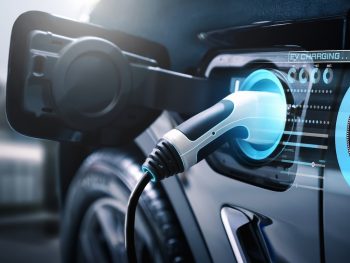Poor mobile connectivity could hamper EV charge point use
Limited mobile signal connectivity at many UK public charge points means EV drivers could be left high and dry when it comes to accessing chargers reliant on apps.

Charging workarounds need to cover for the shortcomings of the mobile networks
Research by the RAC Foundation suggests around two-thirds of Britain’s most common type of public charge point suffer limited mobile signal connectivity – and this could cause problems when drivers seek to ‘fill up’ at thousands of locations.
According to Department for Transport figures (based on data from Zapmap) there were 53,677 public charging devices in the UK at the start of the year.
Of these, 31,910 have speeds up to 8kW and almost all will be so-called Type 2 chargers. Unlike charge points with 8kW or faster, chargers below this speed are not obliged to provide for contactless payment under the new Public Charge Point Regulations.
Instead, the vast majority require drivers to access them via mobile phone apps and most chargers themselves also need an adequate mobile signal connection to function, according to the RAC Foundation.
It points out that Britain has four mobile network providers – EE, O2, Three and Vodafone – on which other companies, Giffgaff, Tesco Mobile etc, can piggyback.
And the transport policy and research organisation said that unless all four are providing adequate signal coverage at the charge point location, there’s a risk that either the user or the charger will lack the connection needed to unlock the flow of electricity.
The RAC Foundation analysed a randomly selected sample of 2,059 Type 2 public chargers across Britain. Its study indicated that the majority of these chargers do not have an adequate level of coverage from all four mobile phone network providers to guarantee they can be activated 100% of the time.
In Britain, outside of London, just a third (33.4%) of the Type 2 chargers analysed are in locations where there is acceptable all-network 4G coverage.
But two-thirds (66.4%) are in spots where a signal from one, two, three or even all the providers is absent or too weak to work. And in London, the picture is only slightly better at 39.7% and 61.3% respectively.
Where a 4G signal is absent then a residual 3G signal might still be available, but the national 3G network is due to be shut down completely by 2033. Vodafone has already turned off its 3G network with EE and Three expected to complete their shutdowns later this year, and O2 next year.
The mobile signal strength data used in the analysis was provided by Teragence. This data was then matched to the 2,059 chargers used in the study.
Steve Gooding, director of the RAC Foundation, said: “Where signal connectivity at a charge point is a problem, drivers might conclude that the charger is at fault, hence undermining the confidence we should be building in the reliability of public charging options for electric vehicles.
“What’s more, the poor connectivity won’t get picked up in the new mandatory reporting system applying only to the rapid charger network.
“In order to design reliable connected services, that work for motorists we need a better approach to assessing and reporting the adequacy of on-the-move connectivity so that designers, including electric charge point providers, can select which of the readily available workarounds would cover for the shortcomings of the mobile networks.”
Suggested workarounds where adequate mobile phone signal coverage is unavailable could include signposting the availability of a limited WiFi hotspot for drivers to use (eg in the on-charger instructions for use) if the charge point’s connection is robust but the motorist’s might not be.
The RAC Foundation also suggests the use of roaming SIM cards, so that connectivity can adjust by roaming to whichever mobile network is most robust at a given moment, and the of external and/or directional antennae for more reliable data connections.
Other solutions mooted include making ‘roaming’ RFID (Radio Frequency Identification) cards more widely, and freely, available to remove the motorist’s phone from the equation, along with improvements to signal quality through the ‘Single Rural Network’ (SRN) programme of mast sharing between mobile network operators.
It’s also suggested satellite internet provision from operators such as Starlink and OneWeb. And as a fallback, when the issue is an unresolvable signal connectivity failure, the charger itself could be set to default to provide a free charge up to a limit that would at least guard against a potential breakdown for lack of a sufficiently charged battery.

